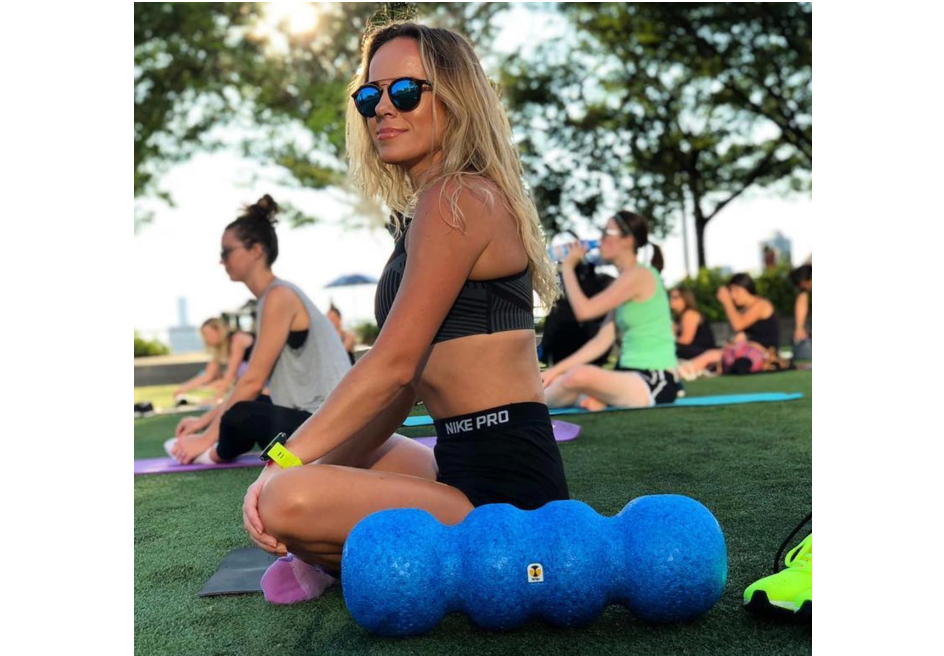Posted by Wilkerson Given
on August 01, 2019


Whether your goal is to improve flexibility, recover faster, help fight off an injury, increase range of motion, decrease soreness, or simply appease your coach/trainer, you’ve most likely heard that foam rolling is a good thing to do. Foam rolling has become an extremely popular tool in the athletic/fitness community and is known for a plethora of different benefits (and for good reason). Foam Rolling has been shown to help with everything from muscle soreness (source), to mobility (source), to increased blood flow (source). With all of these reported benefits and uses, it’s hard to know exactly when you should be using a foam roller and if there is ever a time when you shouldn't.
WHEN SHOULD I FOAM ROLL?
In short, there is no bad time to foam roll. There are, however, times that may be more ‘bang for your buck’ than others. Although there is no bulletproof research or universal agreement on when exactly you should foam roll, the science that is available points to both pre and post exercise being optimal times to foam roll. According to this article by Julia Malacoff, using a foam roller before exercise can help to prepare muscles for the activity at hand by increasing blood flow, relaxing tightness, improving flexibility, and even increasing range of motion. It is worth noting, however, that the goal of foam rolling before exercise should be to activate or warm up the muscles, not to dig so deep into the muscle that the body responds in recovery capacity. After all, you want your muscles to be loose and alert during exercise, not in pain from deep rolling. A great way to make sure that you’re not digging too deep into the muscles before exercise is to apply slightly less pressure onto the foam roller and use marginally quicker strokes up and down the muscles when rolling.
Foam Rolling directly after exercise is also a great way to maximize your time on the foam roller. According to this article and this article, Foam Rolling post exercise has been shown to assist the body’s recovery process by reducing DOMS (delayed onset muscle soreness) and potentially flushing out waste molecules that accumulate in the muscles during exercise. As all athletes know, recovery is the name of the game, so having a tool that has been shown to assist that ever important recovery process seems like a no brainer. The approach towards foam rolling after exercise, however, should be a bit different than the approach before exercise. After exercise, the goal of foam rolling is to jump start the body’s natural recovery process, thus really digging into the muscles and using slower, more methodical strokes could be a good option. Foam Rolling post exercise is also the time when finding those tight, tender “trigger points” (aka fascial adhesions) and pausing on them for 20-30 seconds at a time to stimulate repair is appropriate. Reaching tight, tender spots and being able to apply the correct amount of pressure to positively affect change, however, can be quite difficult with a traditional flat roller. Our bodies are not flat, square surfaces, but rather curved and multilayered, making it very difficult for the broad, even surface of a traditional foam roller to reach every important area of the body. One solution to reaching and targeting muscles properly is using a contoured foam roller like the Rollga (shop here). With a contoured foam roller, it’s also easy to avoid bones and tendons when rolling.
An additional time that foam rolling may offer benefits beyond improving flexibility, increasing range of motion, and enhancing oxygen rich blood flow is before bed. According to this article, foam rolling can put the body in a relaxed state when coupled with focused breathing. Consequently, foam rolling before bed may be a good way to prepare the body for a restful night sleep (not to mention the potential assistance with muscle repair that occurs during rest). One consideration when foam rolling before bed, though, is to make sure to not overdo any one area. While foam rolling before bed should be relaxing and similar in approach to rolling post exercise, according this article, focusing on one spot for more than 20-30 seconds a time could lead to increased irritation rather than relief.
In conclusion, foam rolling has been shown to benefit athletic performance in a number of different ways and has no real limitations on when it should be utilized. There may, however, be specific windows of time when foam rolling is most beneficial. Those specific time windows include before exercise, after exercise, and before bed. The approach towards foam rolling at those specific times should also be considered as the goal result for each timeframe is slightly different. In addition, the ability to properly reach, target, and apply appropriate pressure to muscles plays a significant role in accomplishing the desired result for each specific time. Finding a foam roller that fits your body, reaches the tough spots easily, and avoids rolling over bones and tendons (like the Rollga – shop here) could help to remedy any targeting or pressure limitations from rolling with a traditional flat roller, and could set you on your way to getting the most out of foam rolling!
